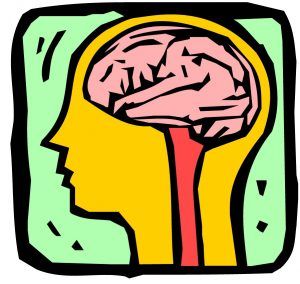-
Partner Services
- Curriculum Design & Development
- Faculty Development
- Instructor Staffing Services
-
Case Studies
- Colleges and Universities
- Columbus Council on World Affairs
- Nationwide
- Ohio Society of CPAs
- Supreme Court of Ohio Judicial College
- Degrees & Certificates
-
About Us
- Our Team
- Blog Archive
Categories
Authors
Archived Articles

Emotional Intelligence and Instructional Design Leadership
Emotional Intelligence may be described as the “ability to reason about emotions” (Salovey & Mayer, 1997). Although psychologists Salovey and Mayer (1997) developed the concept, Daniel Goleman is known as the father of Emotional Intelligence and authored multiple bestselling books on the topic (Goleman refers to it as EQ, but it may also be abbreviated as EI). Recently, Yadav (2014) has posited that organizations can no longer depend solely on the knowledge level of employees but must also consider their EQ in measuring an organization’s success.
Over the past 25 years, researchers have studied the impact of EQ on professional environments. Goleman (1995) famously articulated five components of Emotional Intelligence: self-awareness, self-regulation, self-motivation, empathy, and social skills. So how can Instructional Design Leaders (IDLs) effectively use Emotional Intelligence techniques as a framework for professional achievement? Each technique is examined through an IDL “lens” and connected to key traits, identified by Goleman, which IDLs should possess.
Self-Awareness. The IDL must clearly understand their professional presence—that is, how they appear as a leader in the environment. For example, as the IDL manages multiple projects and people, having keen awareness of oneself as a person can enhance leadership. Specifically, the ability to identify blind spots in oneself makes it easier to talk about them with direct reports.
Key Traits: Self-confidence, realistic self-assessment, and a self-deprecating sense of humor (Goleman, 2001).
Self-Regulation. The IDL must respond appropriately to varied situations, especially crises. For instance, yelling when team members miss a deadline will not help the deliverable instantly appear. Conversely, ignoring a missed deadline can be equally detrimental to accomplishing departmental or organizational objectives. The key for the IDL is to recognize that the team is going to follow her/his lead based on her/his response. Thus, it is of paramount importance to be aware of what constitutes an acceptable response while honoring the authentic self. In fact, Doe, Ndinguri, and Phipps (2015) argue that EQ is proving to be more effective than IQ when selecting leaders.
Key Traits: Trustworthiness and integrity, comfort with ambiguity, and openness to change (Goleman, 2001).
Self-Motivation. The IDL must be intrinsically motivated and able to lead creative projects while also possessing a natural curiosity for the art and science of Instructional Design. It is essential to manage innovative employees to perceive projects as an extension of the organization. As such, focusing only on money or power could result in the development or perpetuation of a leadership style that makes it difficult to overcome the challenges inherent to a learning-centered workplace.
Key Traits: Strong drive to achieve, optimism even in the face of failure, and organizational commitment (Goleman, 2001).
Empathy. The IDL must possess the ability to read the emotions of employees in order to get the best out of them. Working within a high-energy, high-expectation environment will create excitement in some but anxiety in others. Recognizing that these two emotions can be present, perhaps in the same employee at different points in the project, will inform more effective leadership of the team.
Key Traits: Expertise in building and retaining talent, cross-cultural sensitivity, and service to clients and customers (Goleman, 2001).
Social Skills. The IDL must effectively and consistently influence people about numerous priorities and concerns. Examples may include encouraging a colleague to buy into a new process, negotiating with a client to agree to the scope of a project, compromising with a fellow leader to gain approval for a particular budget, or directing an employee to complete a task within the prescribed timeframe. Thus, the ability to gain confidence and build rapport with multiple stakeholders is essential.
Key Traits: Effectiveness in leading change, persuasiveness, and expertise building and leading teams (Goleman, 2001).
After reading this snapshot of EQ through the lens of the IDL, reflect on ways that you could make EQ and its key traits relevant to your own professional development:
- Which of the five components do you perceive as most essential to your growth as an Instructional Design Leader?
- Which of the five components is most essential to the growth of your direct reports? Of your senior leaders?
As an Instructional Design Leader, consider the benefits of further researching and adopting the Emotional Intelligence framework for your entire organization.
References
Doe, R., Ndinguri, E., & Phipps, S.T.A. (2015). Emotional intelligence: The link to success and failure of leadership. Academy of Educational Leadership Journal, 19(3), 105–114.
Goleman, D. (1995). Emotional intelligence: Why it can matter more than IQ. New York, NY: Bantam Books.
Goleman, D. (2001). An EI-based theory of performance. In Cherniss, C. & D. Goleman (Eds.), The emotionally intelligent workplace: How to select for, measure, and improve emotional intelligence in individuals, groups, and organizations (pp. 27–44). San Francisco, CA: Jossey-Bass.
Mayer, J. D. & Salovey, P. (1997). What is emotional intelligence? In P. Salovey & D. Sluyter (Eds), Emotional development and emotional intelligence: Implications for educators (pp. 3–31). New York, NY: Basic Books.
Yadav, S. (2014). The role of emotional intelligence in organization development. IUP Journal of Knowledge Management, 12(4), 49–59.
About the Author
Niccole HyattNiccole Hyatt leads a team of professionals to develop instructional design and learning interventions for academic institutions, governmental entities, and corporations (domestic and international)
Copyright 2025 Franklin University